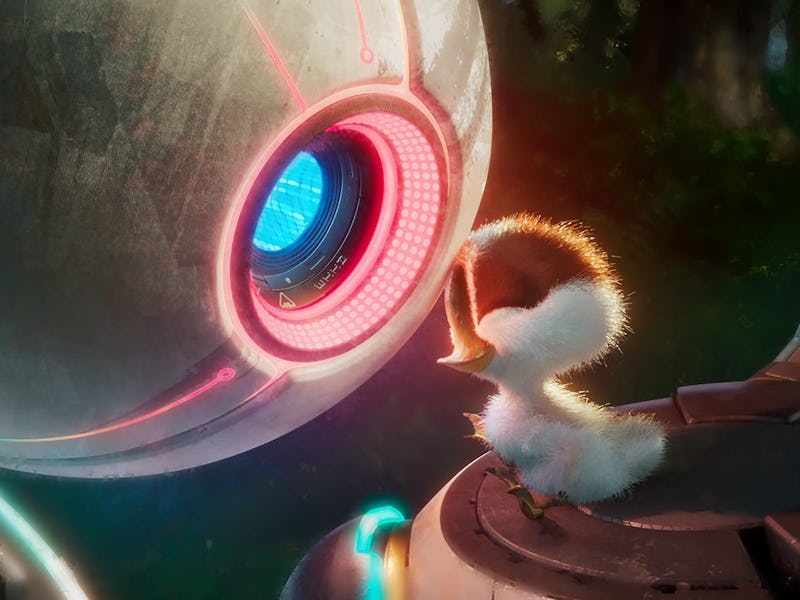The Wild Robot Sets A Stunning New Standard For Animation
Add The Wild Robot to your programming.

It used to be a widely accepted fact that Pixar was the American studio on the cutting edge of CG animation. Ever since it came out of the gate swinging with the animated masterpiece Toy Story, Pixar consistently released high-quality, high-concept films that tested the boundaries of 3D animation and tugged at our heartstrings. Soon, the entire industry followed its example, with Disney and every other animation studio quickly making the switch from 2D animation to 3D.
But Pixar’s success has waned over the last decade. Its sequels began to outnumber its original films, and its films started to become more forgettable (Onward) or less critically acclaimed (RIP Cars 2). Either way, Pixar was no longer leading the American animation pack, and now an unlikely rival has taken its place.
When Spider-Man: Into the Spider-Verse was released in 2018, it changed CG animation forever. Its hybrid blend of 2D animation techniques and a new, comic-book-inspired 3D animation style changed what was possible with the medium, and while Spider-Verse’s studio, Sony Animation, has followed up this game-changer with a handful of solid releases like Mitchells vs. the Machines, it’s clear the studio actually taking Spider-Verse’s baton is, of all options, Dreamworks.
Long considered Pixar’s lesser cousin, Dreamworks didn’t do itself many favors when it doubled down on the winking meta-commentary of its mega-hit Shrek. For years, that’s what you could expect from Dreamworks movies: the smirking “Dreamworks face” and desperately “hip” pop culture references that aged like milk. Ironically, it was a Shrek spinoff that signaled a turning point for Dreamworks, and a recent critically acclaimed sci-fi fable cemented the studio as the major U.S. studio making hybrid 3D/2D the standard.
Written and directed by How to Train Your Dragon co-director Chris Sanders and based on the novel by Peter Brown, The Wild Robot is a lovely little sci-fi fable about a robot (Lupita Nyong’o) who unexpectedly becomes the mother to a newborn goose (Kit Connor) after she accidentally murders his family. The robot — who gives herself the nickname “Roz” — teaches the goose, Brightbill, to fly so he can migrate with the rest of the geese come winter. But each new delightful development comes with more inner turmoil for Roz, as she debates what her programming, and purpose, really is.
Roz and her fellow co-parent, Fink (Pedro Pascal), a sly fox in search of a family.
The most remarkable thing about The Wild Robot is how quiet it is. That seems like an odd descriptor for a film with several action scenes and tongue-in-cheek dialogue from talking animals, but in an era when every frame of American animation is crammed full of wisecracks and exposition, The Wild Robot is surprisingly willing to take it slow.
Its opening half — in which Roz’s ship lands on a deserted island, leaving her stranded amid wild animals who are frightened of her — has surprisingly little dialogue, aside from Roz blurting out a series of programmed phrases. But even as other characters begin to speak (thanks to a nifty narrative trick courtesy of Roz’s translation abilities), The Wild Robot holds steady, faithfully telling the simple story of a robot and her unexpected feathered son.
That the film was inspired by classic Disney and Studio Ghibli films (a robot befriending animals is ripped right from Hayao Miyazaki’s Castle in the Sky) is no surprise. But the inspirations do more than make the film feel nostalgic; it’s also an exquisite throwback to a time when children’s movies weren’t constantly disrespecting the attention span of their audiences.
Though The Wild Robot’s second half gives into the temptations of an action-packed climax, its story of found family and a parent’s love is so moving that it makes this turn forgivable. Besides, any qualms you might have will be drowned out by your tears.